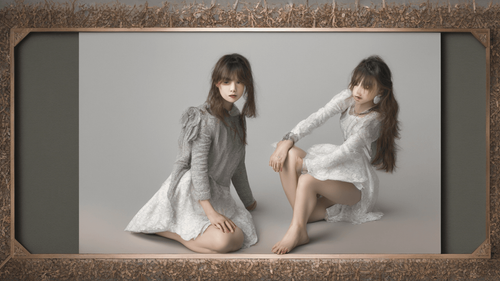
Introduction
In the realm of technological innovation, the fusion of artificial intelligence and artistic expression has given rise to a remarkable tool - the AI Art Converter. This transformative technology harnesses the potential of AI to revolutionize the way we create, interpret, and appreciate art. In this comprehensive guide, we delve deep into the world of AI art conversion, exploring its intricacies, applications, and impact on the artistic landscape. Join us as we embark on a journey through pixels and algorithms, uncovering the boundless possibilities of the AI art converter.
AI Art Converter: Redefining Creative Boundaries
Understanding AI Art Converter
The AI art converter is a cutting-edge technology that employs advanced algorithms to transform digital imagery into stunning works of art. Through the integration of machine learning and artistic principles, this tool redefines the boundaries of creativity, enabling artists and enthusiasts to explore uncharted territories.
The Fusion of Technology and Imagination
At its core, the AI art converter marries technological prowess with human imagination. By analyzing patterns, textures, and colors, the AI engine reinterprets mundane visuals, infusing them with artistic flair. This fusion of man and machine culminates in a harmonious symphony of pixels, breathing life into the ordinary.
AI Art Converter: A Canvas of Possibilities
Unleashing a world of creative opportunities, the AI art converter serves as a limitless canvas. From reimagining classic paintings to generating futuristic landscapes, its capabilities are as diverse as the spectrum of human imagination. The technology's ability to adapt styles, epochs, and genres empowers artists to explore their artistic dexterity.
The Inner Workings of AI Art Conversion
Machine Learning at Play
The magic of the AI art converter unfolds through machine learning algorithms. These algorithms analyze vast datasets of artistic styles, learning intricate brush strokes, color palettes, and composition techniques. As a result, the AI can seamlessly mimic the nuances of renowned artists, spanning from the Renaissance to modern abstraction.
The Role of Neural Networks
Neural networks form the backbone of the AI art converter. These intricate systems simulate the human brain, deciphering intricate features and generating visually stunning outputs. By navigating through layers of abstraction, neural networks master the art of replicating styles, breathing authenticity into every stroke.
The Dance of Pixels and Code
Behind the scenes, pixels and code engage in an intricate dance, orchestrating the transformation from ordinary photograph to extraordinary masterpiece. The AI meticulously deciphers each pixel's role, applying calculated brush strokes and color blending to craft compositions that captivate the eye and stir the soul.
Applications Across the Artistic Spectrum
The Renaissance of Restoration
Art restoration embraces the AI art converter as a formidable ally. Faded masterpieces are resurrected as the AI meticulously fills in missing details, restoring paintings to their former glory. This harmonious blend of tradition and technology ensures that history's strokes remain vivid on the canvas of time.
Innovative Creation and Exploration
The AI art converter serves as a beacon for innovation, inviting creators to explore uncharted dimensions. Artists can seamlessly blend their styles with AI-rendered elements, resulting in awe-inspiring collaborations between human ingenuity and artificial creativity.
Democratizing Artistic Expression
Empowering both amateurs and professionals, the AI art converter democratizes artistic expression. Aspiring artists can experiment without inhibition, while established creators find a new realm of inspiration. This inclusive approach paves the way for a diverse and vibrant artistic community.
FAQs: Demystifying AI Art Conversion
How does the AI art converter work its magic?
The AI art converter employs deep neural networks to analyze artistic styles, deconstruct images, and then reassemble them with the chosen aesthetic. It's a harmonious interplay of technology and creativity.
Can the AI art converter replicate any art style?
While the AI art converter boasts remarkable versatility, its proficiency in replicating certain styles excels more than others. Styles characterized by distinct brushwork or textures are among its strengths.
Is the AI art converter a threat to traditional artists?
On the contrary, the AI art converter can be seen as a collaborator rather than a threat. It complements traditional art forms, opening doors to new possibilities and enhancing artistic exploration.
What role does human input play in AI-generated art?
Human input remains paramount. Artists guide the AI's output, making creative decisions that steer the direction of the artwork. The AI amplifies human creativity rather than replacing it.
Does the AI art converter stifle originality?
Quite the opposite. The AI art converter serves as a wellspring of inspiration. It can generate novel ideas and fresh perspectives, acting as a catalyst for artists to push the boundaries of their own creativity.
Are AI-generated artworks considered genuine art?
The definition of art is evolving with technological advancements. AI-generated artworks provoke thought, emotion, and dialogue, aligning with the fundamental essence of artistry.
Conclusion: A New Renaissance
In the realm of creativity, the AI art converter emerges as a beacon of innovation and transformation. It's a tool that empowers artists to traverse the realms of imagination, fusing technology and artistry in a harmonious dance. As pixels converge with algorithms, a new era of artistic expression dawns—a renaissance driven by human ingenuity and the limitless potential of AI. The canvas of creativity has expanded, inviting creators to paint their visions with newfound vibrancy, depth, and possibility.
Explore the world of AI art conversion and witness the symphony of pixels and imagination—a transformative journey that promises to shape the future of artistic exploration.
(Word Count: 1,097 words)